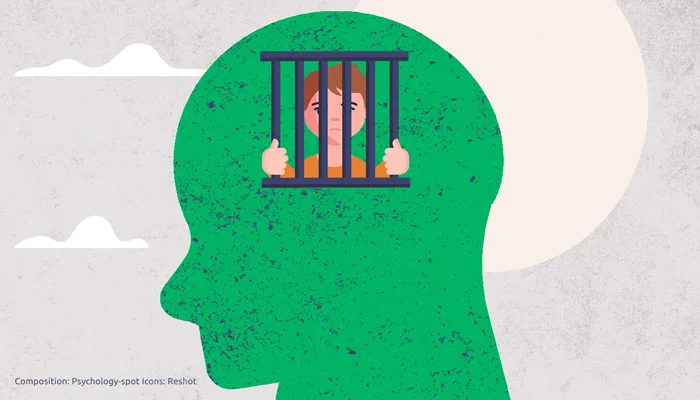
Revenge is one of the most human impulses and, paradoxically, also one of the most self-destructive. From the severity of the Code of Hammurabi dating back to 1754 BC to the Bible’s “You shall exact a life for a life, an eye for an eye, a tooth for a tooth… “, the ancients specified how the impulse of revenge should be carried out by establishing what is known as the “principle of proportionality.”
When someone hurts us, the desire for revenge isn’t so much about the harm itself, but rather the need to restore the balance and justice we feel has been robbed of. However, psychological studies have confirmed that traditional forms of revenge and the accompanying feelings (retaliation, humiliation, or resentment) rarely bring inner peace. There is a better way.
Why traditional revenge doesn’t work?
The human brain is hardwired to seek justice. Social neuroscience studies show that when we perceive an offense, the amygdala—the brain’s emotional center—is activated, generating anger and an almost automatic desire to “hit back.” In fact, neuroscientists at the University of Geneva have found that the greater the neuronal activation, the stronger the internal impulse to punish.
As a result, people who seek revenge often present with systemic agitation, which translates into constant rumination, hyperarousal and irritability, insomnia, and difficulty concentrating. Confucius had already warned us: “Before embarking on a journey of revenge, dig two graves.”
However, this reaction, although natural, has three fundamental problems:
- It maintains the cycle of pain. Direct revenge may provide momentary satisfaction, but it rarely heals wounds. Instead of liberating, it often generates more rumination and generally leads to an escalation of conflict.
- It anchors you to the past. Every time you dwell on grievances, you amplify their significance and exacerbate what triggered the anger. This leads you to relive the original injury, giving it more power over your present, so you become tied to what happened. As Francis Bacon said, “He who studies revenge keeps open wounds that would otherwise heal.”
- It turns you into what you criticize. Seeking revenge—which is not the same as justice—brings you closer to the person who harmed you. As Nietzsche said, “He who fights with monsters must take care not to become a monster himself. When you gaze long into an abyss, the abyss gazes into you.”
Smart Revenge: Prospering as a Response
The most effective way to get revenge isn’t to bring down the other person, but to rise above the harm inflicted. This doesn’t mean justifying what they did, forgiving them, or pretending nothing happened, but rather using that emotional energy as fuel for transformation. We could call this “constructive revenge.” How can we achieve it?
Replace the obsession with revenge with a growth goal
Holding on to resentment consumes a huge amount of mental resources that could be devoted to pursuing your dreams. A study from the University of Texas found that people who channel their anger and indignation toward personal goals (such as improving their career, health, or relationships) not only overcome their resentment more quickly, but also experience a deeper sense of justice: that of having turned a defeat into a triumph.
Adopting this attitude means, in a way, stopping paying attention to the person who hurt us, which is also positive. In fact, revenge is so painful because the eye-for-an-eye mentality looks back and focuses on the original insult. But if you dedicate that energy to pursuing your goals, you’ll be forced to look forward.
Taking this step is often profoundly liberating, especially because it fosters growth and unties the knots that held you captive to past hurt or harm. Achieving these goals, despite what happened, will also restore your self-confidence and repair feelings of vulnerability or helplessness.
Turn injustice into legacy
Some of the greatest contributions to art, science, and social justice were born from deeply painful experiences. When Viktor Frankl was deported to the Nazi concentration camps in 1942, he lost everything: his family, his freedom, and even the manuscript of his first book, which he had sewn into the lining of his coat.
In that place designed to destroy not only bodies but also souls, he discovered a truth that would change psychology: even in the most despicable and terrible conditions, human beings can choose their attitude. While other prisoners sank into despair, Frankl observed that those who found a “why”—a reason to keep going, however small—were more likely to survive.
Auschwitz and Dachau not only didn’t break him, but they provided the raw material for his theory: logotherapy. Frankl didn’t take revenge on his executioners; he transcended them. After his liberation in 1945, he dedicated his life to demonstrating that even suffering can be transformed into meaning if we are able to reframe it.
He proposed that humankind’s most motivating force is the search for meaning, and he helped countless people find it after traumatic experiences. His approach influenced humanistic psychology, modern resilience, and even treatments for depression and post-traumatic stress disorder. Once, when a student asked him if he should forgive the Nazis, he replied, “I’m not talking about forgiveness. I’m talking about responsibility: the choice of what we do with our pain.”
Thus, the circle came full circle: what tried to destroy him ended up cementing his work. His greatest revenge was turning the emptiness and horror of the concentration camp into a beacon to help millions of people through their crises. Using your story as a driving force to create something worthwhile (be it a project or helping others in a similar situation) is a form of “constructive revenge.”
When you choose to thrive instead of revenge, two profound changes occur:
- Internally , you regain narrative control. You are no longer the victim, but the protagonist of your own evolution. You are no longer at the mercy of what happened to you and decide to move forward.
- On an external level , the implicit message is also clear: “You didn’t destroy me, you made me stronger.” Curiously, this is often what most disconcerts, and in some cases, even haunts the person who tried to harm you.
The best way to take revenge isn’t to harm someone else, but to prove to yourself that that harm didn’t define you. As the Stoic philosopher Marcus Aurelius wrote, “The best revenge is not to be like your enemy.” In the end, the greatest triumph isn’t that the person who hurt you suffers, but that you’ve managed to move on and continue to grow despite that pain and suffering.
References:
Lench, H. et. Al. (2024) Anger Has Benefits for Attaining Goals. Journal of Personality and Social Psychology: Attitudes and Social Cognition; 126(4): 587-602.
Klimecki, OM: Sander, D. & Vuilleumier, P. (2018) Distinct Brain Areas involved in Anger versus Punishment during Social Interactions. Sci Rep; 8:10556.
Da Cunha-Bang, S. et. Al. (2017) Violent offenders respond to provocations with high amygdala and striatal reactivity. Soc Cogn Affect Neurosci; 12(5): 802-810.




Leave a Reply